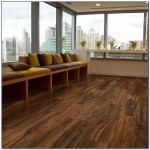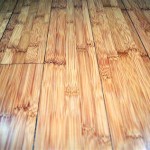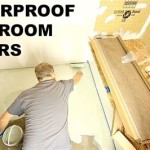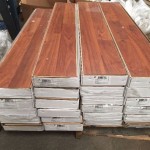How To Level Plywood Subfloor For Vinyl Plank Flooring In Bathroom
Installing vinyl plank flooring in a bathroom offers a durable, water-resistant, and aesthetically pleasing solution. However, the key to a successful and long-lasting vinyl plank floor lies in proper subfloor preparation. A common subfloor material in bathrooms is plywood, and ensuring it is perfectly level is paramount before laying any vinyl plank. Imperfections in the subfloor, such as dips, humps, or unevenness, will translate through the vinyl plank, leading to an unsightly finish, potential damage to the planks, and premature wear.
This article provides a comprehensive guide on how to level a plywood subfloor in a bathroom specifically for vinyl plank flooring installation. The process involves several critical steps, from assessing the existing subfloor to applying leveling compounds and ensuring a perfectly smooth and even surface. Adhering to these guidelines will result in a professional-looking and durable vinyl plank floor in the bathroom.
Assessing the Plywood Subfloor
The first and arguably most important step is a thorough assessment of the existing plywood subfloor. This involves identifying and documenting any imperfections that need to be addressed. Proper assessment prevents overlooking potential problems that could surface after the vinyl plank is installed.
Begin by visually inspecting the entire subfloor surface. Look for any obvious signs of damage, such as water stains, mold, rot, warping, or delamination. Water damage can significantly compromise the integrity of the plywood, making it necessary to replace affected sections. Small areas of rot can sometimes be treated with wood hardener, but extensive rot requires complete replacement of the damaged plywood sheet. Warping and delamination also indicate structural weaknesses that need to be rectified.
Once the visual inspection is complete, use a level and straightedge to identify any unevenness in the subfloor. A 6-foot level is ideal for this task. Place the level on the subfloor in various directions, both lengthwise and widthwise, and note any gaps between the level and the subfloor. These gaps indicate dips or humps that need to be leveled. Mark these areas clearly with a pencil or marker.
For more precise measurements, a straightedge can be used in conjunction with shims. Place the straightedge on the subfloor and slide shims underneath it until it is perfectly level. Measure the thickness of the shims to determine the depth of the dips. This information will be crucial when selecting the appropriate leveling compound and determining the amount needed.
It is also essential to check for loose or squeaky areas in the subfloor. These areas often indicate that the plywood is not properly fastened to the floor joists. Loose plywood can cause the vinyl plank to flex and potentially crack over time. To address this issue, drive additional screws or nails into the plywood, ensuring they penetrate deeply into the joists. Consider using construction adhesive in conjunction with the fasteners for added stability.
Pay close attention to the perimeter of the room where the subfloor meets the walls. Any gaps or cracks in this area should be filled with a flexible sealant to prevent water from seeping under the subfloor. This is particularly important in bathrooms, where water exposure is high.
Preparing the Subfloor for Leveling
Once the subfloor assessment is complete and the necessary repairs have been made, the next step is to prepare the surface for leveling. Proper preparation ensures that the leveling compound adheres correctly to the plywood and provides a smooth and even base for the vinyl plank flooring.
Begin by thoroughly cleaning the subfloor. Remove any debris, dust, dirt, and remnants of old adhesives or flooring materials. A vacuum cleaner is effective for removing loose debris, followed by a thorough scrubbing with a mild detergent and water. Be sure to allow the subfloor to dry completely before proceeding to the next step. Moisture can interfere with the adhesion of the leveling compound and potentially cause problems later on.
After cleaning, it is crucial to prime the plywood subfloor. Priming creates a bonding surface that allows the leveling compound to adhere properly. Use a primer specifically designed for use with self-leveling compounds and follow the manufacturer's instructions carefully. Apply the primer evenly across the entire subfloor surface using a brush or roller. Allow the primer to dry completely before proceeding. The drying time will vary depending on the type of primer and the ambient temperature and humidity.
For areas with particularly deep dips or unevenness, it may be necessary to install shims before applying the leveling compound. Shims can be made from thin pieces of wood or plastic and are used to bring the low spots closer to the level of the surrounding subfloor. Secure the shims to the subfloor with construction adhesive and screws. Ensure that the shims are firmly attached and do not move when pressure is applied.
When priming around the perimeter of the room, take care to protect the walls and fixtures from accidental spills. Use painter's tape to mask off the areas you want to protect. This will save time and effort later on when cleaning up. Furthermore, consider installing a foam expansion strip along the perimeter to allow for movement of the subfloor and prevent cracking of the leveling compound.
Applying Leveling Compound
The application of the leveling compound is the core of the subfloor leveling process. This step requires careful attention to detail and adherence to the manufacturer's instructions. Choosing the right type of leveling compound and applying it correctly is critical for achieving a smooth and level surface.
Select a self-leveling compound specifically designed for use with wood subfloors. These compounds are formulated to bond effectively with plywood and provide the necessary flexibility to accommodate the natural movement of the wood. Read the product label carefully to ensure that it is compatible with vinyl plank flooring and suitable for use in bathrooms. Pay attention to the maximum thickness that the compound can be applied in a single layer. For deeper dips, multiple layers may be necessary.
Before mixing the leveling compound, gather all the necessary tools and equipment, including a mixing bucket, a drill with a mixing paddle, a gauging trowel, and a spiked roller. Follow the manufacturer's instructions for mixing the compound. The consistency should be similar to that of a thick pancake batter. Avoid adding too much water, as this can weaken the compound and cause it to crack or crumble. Mix the compound thoroughly to ensure that there are no lumps or dry spots.
Pour the mixed leveling compound onto the prepared subfloor, starting in the deepest areas and working your way outwards. Use the gauging trowel to spread the compound evenly across the surface, ensuring that it fills all the dips and low spots. Work quickly, as the self-leveling compound will start to set within a few minutes. Do not overwork the compound, as this can disrupt its self-leveling properties.
Immediately after pouring and spreading the leveling compound, use the spiked roller to remove any air bubbles that may be trapped within the mixture. Roll the spiked roller across the entire surface in multiple directions, applying moderate pressure. This will help to ensure a smooth and even finish.
Allow the leveling compound to dry completely before proceeding to the next step. The drying time will vary depending on the type of compound, the thickness of the application, and the ambient temperature and humidity. Refer to the manufacturer's instructions for specific drying times. Avoid walking on the leveled subfloor during the drying process.
For deeper dips or unevenness, multiple layers of leveling compound may be required. Allow each layer to dry completely before applying the next. Lightly sand each layer to remove any imperfections or ridges and prime the surface before applying the next coat. This will ensure optimal adhesion between the layers.
After the leveling compound has completely dried, inspect the surface carefully for any remaining imperfections. If necessary, use a sanding block or orbital sander to smooth out any rough spots or high areas. Vacuum the subfloor thoroughly to remove any sanding dust before proceeding to the installation of the vinyl plank flooring.
When working with self-leveling compounds, proper ventilation is essential. Open windows and doors to provide adequate airflow. Wear a dust mask and gloves to protect yourself from dust and irritants. Dispose of any leftover leveling compound according to local regulations.
By following these steps, the plywood subfloor will be effectively leveled, creating a smooth and even base for the vinyl plank flooring, ensuring a durable, water-resistant, and aesthetically pleasing bathroom floor that will last for years to come. Proper preparation and careful execution are the keys to a successful installation.

How To Install Vinyl Plank Flooring In A Bathroom Fixthisbuildthat

How To Level A Plywood Subfloor With And Self Leveling Compound

How To Prep Wood Subfloor For Luxury Vinyl Plank Flooring Beginners Fix High And Low Spots

Leveling The Bathroom Subfloor Handy Mandy

How To Install Vinyl Plank Flooring In A Bathroom Fixthisbuildthat

How To Prepare The Floor For Vinyl Plank Installation

How To Level A Plywood Or Osb Subfloor Using Asphalt Shingles Construction Felt

How To Level A Subfloor Before Laying Tile

How To Prepare A Subfloor For Tile Installation The Home

How To Install Vinyl Plank Flooring In A Bathroom Fixthisbuildthat
See Also







